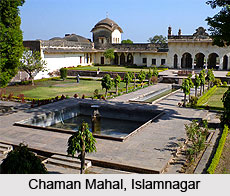 History of Bhopal states with the name of Parmaras Kings of Madhya Pradesh. Bhopal is one of the oldest cities in Central India and this city has a glorious past. The history of Bhopal narrates tales of interesting, heroic and amazing incidents. Bhopal takes pride in its excellent blend of Islamic and Hindu cultures. There are various dynasties that have ruled the city over the years, contributing to its architectural and historical richness.
History of Bhopal states with the name of Parmaras Kings of Madhya Pradesh. Bhopal is one of the oldest cities in Central India and this city has a glorious past. The history of Bhopal narrates tales of interesting, heroic and amazing incidents. Bhopal takes pride in its excellent blend of Islamic and Hindu cultures. There are various dynasties that have ruled the city over the years, contributing to its architectural and historical richness.
Early Medieval History of Bhopal
The early history of medieval Bhopal starts with its foundation by the Parmara King Bhoj (1000-1055), who had his capital at Dhar. The city was initially known as Bhojpal named after Bhoj and the dam (`pal`) that he is said to have constructed to form the lakes bounding Bhopal. The fortunes of Bhopal rose and fell with that of its reigning dynasty. As the Parmaras declined in power, the city was destroyed several times and finally faded away into obscurity.
Later Medieval History of Bhopal
An Afghan soldier of the Orakzai tribe called Dost Mohammad Khan laid out the present city of Bhopal at the same site following the death of the Mughal Emperor Aurangzeb in 1707. He brought with himself the Islamic influence on the culture and architecture of Bhopal, the ruins of which is still evident at Islam Nagar.
Modern History of Bhopal
Bhopal was the second largest Muslim state in pre-independence India and was ruled by four Begums from 1819 to 1926. History of Bhopal has also experienced the rule of Begums, like the famous Qudisa Begum, who was the first female ruler of Bhopal and was succeeded by her only daughter Sikandar, who in turn was succeeded by her only daughter, Shahjehan. Kaikhusrau Jahan Begum was the last female ruler, and was succeeded by her son. The succession of the `Begums` gave the city such innovations as waterworks, railways and a postal system. History of Bhopal has witnessed several monuments as reminders of this glorious period.

Bhopal after Independent India
It was one of the last princely states to sign the `Instrument of Accession` 1947. Though India gained Independence in August 1947, the ruler of Bhopal surrendered to the Indian government on 1 May 1949. Sindhi refugees from Pakistan lived in Bairagarh (Sant Hirdaram nagar), a western suburb of Bhopal. According to the States Reorganization Act of 1956, Bhopal state was incorporated into the state of Madhya Pradesh, and Bhopal was declared as its capital. The population of Bhopal rose rapidly since then. Even after India`s independence from British rulers, HH Nawab Hamidullah Khan, who had been titled `Aala Hazrat`, ruled Madhya Pradesh. He had his personal influence not only over the heads of the remaining states, but also over the eminent national leaders of the independent India. "Nai Raah", a weekly Hindi journal was started with the motive to raise the voice of people of Bhopal State, to move for merger. "Nai Raah" very soon became the mouthpiece of people of Bhopal State, promulgated the smouldering fire in the hearts of oppressed and suffering public of the state. Ultimately Sardar Patel had to speak up on behalf of the union government to pressurise for the merger. As a result, the agreement of the merger of the Bhopal State in the union of the independent India was signed on 30 April 1949.
Gas Tragedy of Bhopal
On December 3, 1984, the modern history of Bhopal faced a devastating incident, when a Union Carbide plant in Bhopal leaked 42 tons of toxic methyl isocyanate gas, leading to the a massacre of about 3,000 deaths. The Bhopal disaster is often said as the world`s worst industrial disaster and is observed as black day. Every year all government offices in Bhopal remain closed on this day. The history of Bhopal entails many hindrances to the path of destruction; however the city has presently emerged as one of the most flourishing one in central India.



















